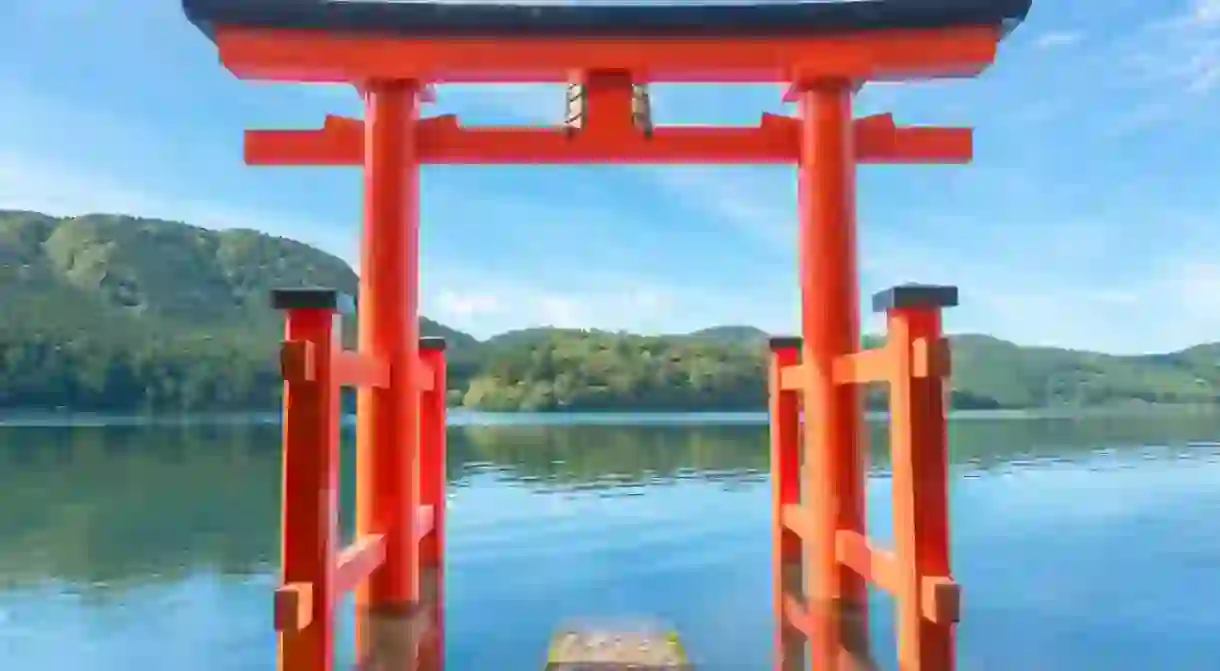The 10 Best Things To See and Do in Hakone, Japan

Picturesque Hakone, a mountainous retreat south-west of Tokyo, serves up a unique concoction of innovative art museums, breathtaking natural beauty and soothing hot springs. Here, discover the best things to do and see on a Hakone day trip.
Art in Hakone
Museum

Hakone is not only brimming with hot springs and natural beauty, but is also a sanctuary for the arts. Museums and galleries in Hakone take full advantage of the region’s spectacular scenery, from the lakeside Naruwaka Museum of Art to the verdant hills that surround the Hakone Open-Air Museum. The region’s myriad art museums warrant their own round-up, but if you only have time to visit one or two, make it one of the following.
Hakone Glass no Mori
Museum

A lucent glass tunnel leads visitors into Hakone Glass no Mori, a unique museum in Sengokuhara. Also known as the Hakone Venetian Glass Museum or the Hakone Glass Forest, this museum brings a slice of Italy to the Hakone mountains, showcasing spectacular Murano glasswork. The Italian-style buildings that make up the museum are framed by mountains and hugged by landscape gardens, which feature a winding canal, outdoor glass sculptures and trees dripping in delicate raindrops made from glass.
Hakone Open-Air Museum
Museum, Park

Nature in Hakone
Architectural Landmark

Hakone is a region of spectacular natural beauty, accounting for a large portion of Fuji-Hakone-Izu National Park. In the north, the hills of Sengokuhara are covered in fields of golden pampas grass, while the idyllic Lake Ashi occupies much of Hakone’s western border. The Hakone Ropeway, which soars over the volcanic valley of Ōwakudani, and the Hakone Tozan Railway, transporting passengers through dense woodland between Gora and Hakone-Yumoto, are two great options to experience the region’s landscape in all its beauty. Head here for a full list of Hakone’s natural attractions and outdoor activities.
Sengokuhara Susuki Grass Fields
Natural Feature
One of Hakone’s most photogenic natural spots can be found in the northern region of Sengokuhara. Blanketing the hills at the base of Mount Hakone are tussocks of tall pampas grass, a sight uniquely beautiful in the autumn months, when the grass turns golden. A walking path cuts through the centre of the field, allowing visitors to wander through the swaying leaves and take in views over the golden hills. During the summer months, the grass is a brilliant green, while it’s generally not advised to visit during the spring when the field is cleared for regrowth.
Hakone Shrine
Shinto Shrine

Concealed by woodland near the shoreline of Lake Ashi is the region’s main Shinto shrine, marked out by a red torii gate that famously rises out of the water. The image of the gate, which frames the tranquil Lake Ashi and mountains beyond, is a recognisable symbol of the union between Japan’s natural beauty and sacred sites. As such, many visitors to Hakone flock here for a perfect picture, though for a shot of the floating gate against the forest and snowy peak of Mount Fuji, it’s best to head to the opposite side of the lake. Hakone Shrine itself is a more peaceful spot to explore, often shrouded in mist and attached to a small museum.
Ōwakudani
Natural Feature

At the heart of Hakone is Ōwakudani, a sweeping geothermal valley created by the eruption of the Hakone volcano 3,000 years ago. On a clear day, those hiking around the valley can take in views of Mount Fuji, while from the Hakone Ropeway you can see bubbling hot springs and clouds of white smoke drifting over the crater. Many visitors make the journey to Ōwakudani to try the region’s special black eggs, hard-boiled in natural sulfurous hot springs. It’s believed that the eggs have medicinal qualities, and that eating one of them could prolong your life for seven years.
Hot Springs in Hakone
Spa

Hakone is famous for its natural hot springs, with an abundance of onsen and bathing facilities found throughout the region. Many traditional inns and hotels have their own onsen, but there is also a great selection of public bathhouses open to day trippers. Whether you’re after a traditional soak or something a little different, here are two of the best public hot spring baths to visit in Hakone. For a full list of Hakone’s public bathhouses, see here.
Hakone Kowakien Yunessun
Spa
A complex of hot spring baths, pools, water slides, saunas and more, Yunessun spa is a novel take on the traditional onsen. Guests can choose to soak in energising coffee baths, rejuvenating wine baths and even Japanese sake baths, while families with kids are invited to enjoy a variety of pools and mountain water slides. Unlike more traditional bathhouses in Hakone, swimsuits are permitted and some areas of the resort allow covered tattoos.
Tenzan Onsen
Spa
Tenzan Onsen in Hakone Yumoto is regarded as one of the best public bathhouses for a traditional onsen experience, offering day trippers a maze of indoor and outdoor pools to laze in. Open-air baths are surrounded by lush woodland, while inside, guests can enjoy a sauna, get a massage and slurp up soba noodles.













